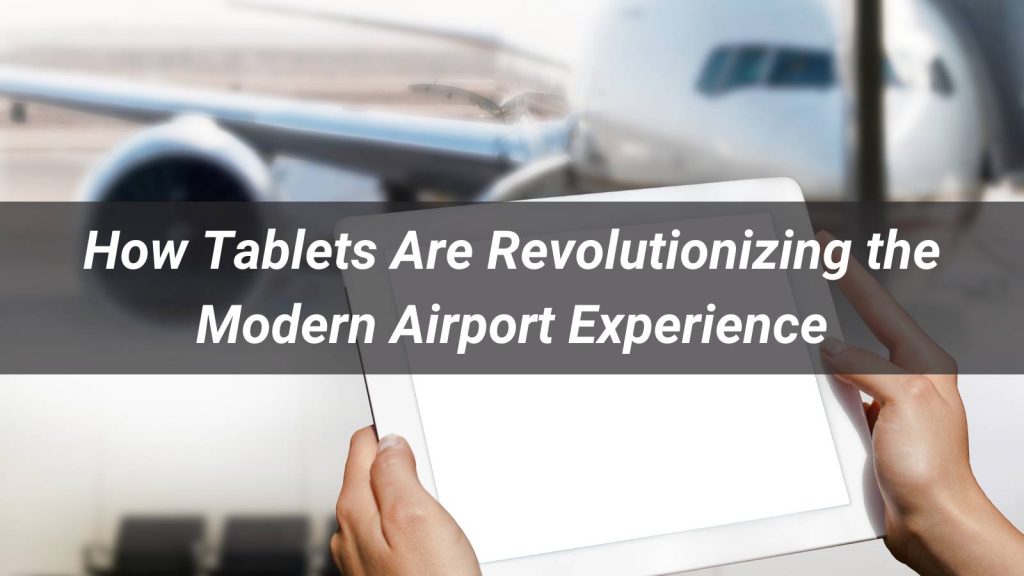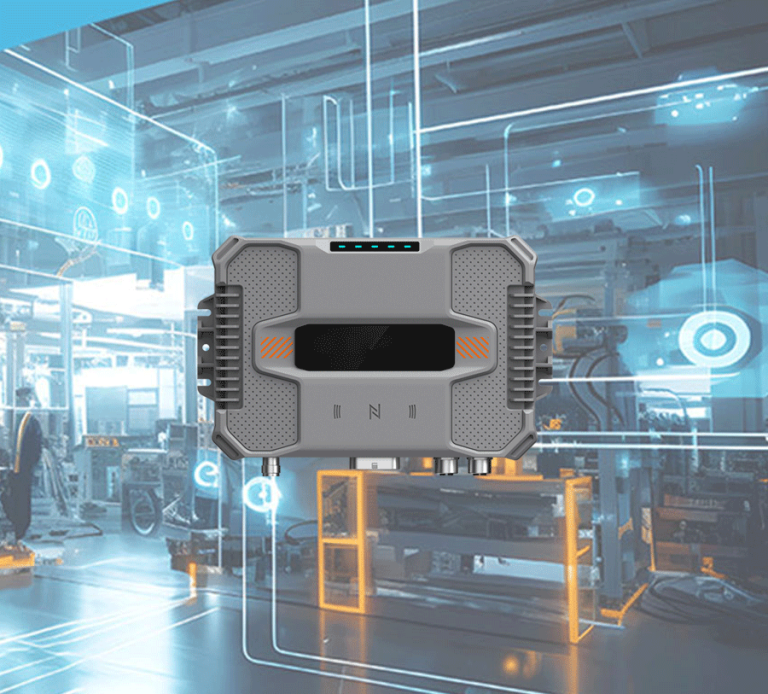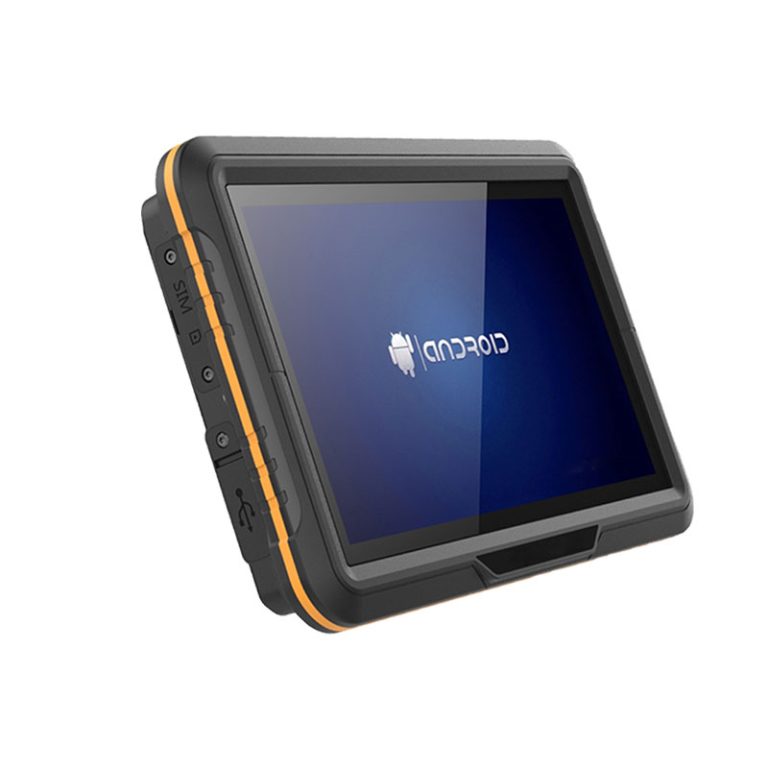Have you ever wondered how airports manage to process thousands of passengers so efficiently? What if you could skip long check-in lines, navigate terminals effortlessly, or even order food without speaking to a single staff member? And how are airlines reducing delays and lost luggage while keeping security tight? The answer lies in an unexpected hero: the humble tablet.
From self-service kiosks to AI-powered security checks, tablets are transforming every step of the travel journey. These portable devices streamline operations, enhance passenger convenience, and even help airports cut costs—all while making travel smoother and more enjoyable. Whether you’re a frequent flyer or an aviation professional, understanding this shift is key to navigating the future of air travel.
This article explores how tablets are reshaping modern airports, from check-in to boarding and beyond—read on to discover how your next trip could be faster, smarter, and more seamless than ever before.
1. Introduction: The Rise of Tablet Technology in Airports

Tablets have emerged as transformative tools in modern airports, reshaping the travel experience for passengers, staff, and operators. These versatile devices bridge efficiency and convenience, enabling seamless check-ins, real-time updates, and enhanced security measures. By replacing traditional paper-based processes with digital solutions, tablets are reducing wait times, cutting operational costs, and elevating service standards. This article examines the expanding role of tablet technology across airports worldwide, highlighting its impact on passenger satisfaction, security protocols, and behind-the-scenes logistics—proving that the future of aviation is increasingly touchscreen-driven.
2. Enhancing the Passenger Journey with Tablet Solutions

Tablets have become essential tools for improving every step of the passenger journey, from check-in to boarding. By offering self-service options, real-time updates, and interactive navigation, these devices reduce wait times, minimize confusion, and create a smoother travel experience. Airports worldwide are adopting tablet-based solutions to streamline processes and enhance customer satisfaction.
2.1 Self-Service Check-In & Baggage Drop
Tablets are revolutionizing traditional check-in counters by enabling self-service kiosks that allow passengers to check in, select seats, and print baggage tags without staff assistance. For instance, Delta Air Lines has deployed tablet-equipped kiosks at major hubs like Atlanta and Los Angeles, reducing queue times by up to 30%. Some airports, including Amsterdam’s Schiphol, have introduced mobile baggage drop stations where travelers can scan their boarding passes on tablets, weigh luggage, and receive instant confirmation—eliminating the need for lengthy counter interactions.
2.2 Real-Time Flight Updates & Digital Boarding Passes
Gone are the days of paper tickets and crowded departure boards. Tablets now provide passengers with instant flight status notifications, gate changes, and digital boarding passes. Airlines such as Emirates and Singapore Airlines use tablet-based systems to push personalized updates to travelers, ensuring they stay informed throughout their journey. At Hong Kong International Airport, interactive tablet displays near gates allow passengers to scan their boarding passes for real-time updates, reducing last-minute confusion during boarding.
2.3 Interactive Wayfinding & Indoor Navigation
Navigating large airport terminals can be daunting, but tablets simplify the process with interactive maps and augmented reality (AR) wayfinding. Airports like Dubai International and Tokyo Haneda have installed tablet kiosks that provide step-by-step directions to gates, lounges, and amenities. Some advanced systems even use Bluetooth beacons to guide passengers via their smartphones or airport-issued tablets, ensuring they reach their destinations efficiently.
2.4 Personalized Travel Assistance & Multilingual Support
Tablets enhance customer service by offering personalized assistance and breaking language barriers. At Incheon International Airport in South Korea, multilingual staff use tablets to communicate with international travelers via translation apps, ensuring smooth interactions. Additionally, some airlines provide tablets to premium passengers, allowing them to request services like lounge access, meal preferences, or last-minute upgrades directly from their seats.
By integrating tablets into every stage of the passenger journey, airports are creating a more efficient, stress-free, and personalized travel experience—proving that these devices are far more than just convenience tools.
3. Optimizing Airport Operations with Tablet Integration

Tablets have become indispensable tools for airport staff, transforming workflows across check-in, security, maintenance, and management. By replacing paper-based processes with real-time digital solutions, these devices enhance efficiency, reduce errors, and enable more agile operations. From frontline employees to senior managers, tablets are streamlining tasks and improving decision-making in airports worldwide.
3.1 Staff Communication & Task Management
Tablets enable seamless coordination among airport teams, from ground handlers to gate agents. Airlines like Tigerair Australia equip staff with iPads running custom apps to process check-ins on the go, cutting queue times by up to 40%. At London Heathrow, supervisors use tablets to dynamically reassign staff during disruptions, while Delta Air Lines provides its ramp crews with rugged tablets to track baggage loading in real time—reducing misplaced luggage incidents by 15%. Push-to-talk apps like Zello also turn tablets into instant communication devices, replacing bulky radios for maintenance and security teams.
3.2 Maintenance & Facility Monitoring
Durable tablets like the Getac F110 are revolutionizing airport maintenance. Equipped with barcode scanners and IoT sensors, these devices help technicians:
- Report equipment issues via digital work orders (e.g., Singapore Changi Airport’s tablet-based maintenance system)
- Monitor energy usage and HVAC performance across terminals
- Conduct runway inspections with augmented reality overlays, as tested at Dallas/Fort Worth International
Such tools have reduced aircraft turnaround delays by 25% at airports adopting tablet-driven maintenance workflows.
3.3 Data-Driven Decision Making for Airport Managers
Tablets provide executives with dashboards to optimize operations:
- Real-time analytics on passenger flow (e.g., Amsterdam Schiphol’s tablet-powered crowd management)
- Predictive modeling for staffing needs, leveraging historical flight data
- Remote troubleshooting of IT systems via secure admin apps
At Dubai International, managers use Surface Pro tablets to adjust security lane allocations during peak hours, improving throughput by 30%.
4. Strengthening Airport Security Through Tablet Technology

Tablets have become vital tools in modern airport security, enhancing both efficiency and threat detection while maintaining strict compliance with aviation regulations. From biometric screening to AI-driven surveillance, these devices are transforming how airports prevent risks and streamline passenger processing.
4.1 Biometric Verification & Fast-Track Security
Tablets equipped with facial recognition and fingerprint scanning are accelerating identity checks at security checkpoints. Airports like Dubai International and Atlanta Hartsfield-Jackson use tablet-based biometric systems to verify passengers against e-passport data, reducing average screening time by 50%. Programs such as TSA PreCheck and Clear integrate tablets to validate traveler credentials instantly, while Singapore Changi Airport’s Fast & Seamless Travel (FAST) initiative employs iPads for contactless immigration clearance.
4.2 AI-Powered Surveillance & Threat Detection
Advanced tablets with AI-driven analytics help security teams identify potential threats in real time. Behavioral analysis systems linked to CCTV networks flag unusual passenger activity, as seen in London Heathrow’s trial with AI monitoring tablets. Object recognition software assists TSA officers in highlighting suspicious items in X-ray scans, improving detection accuracy by 30%. Predictive risk assessment tools like SITA’s Smart Path analyze passenger data to prioritize high-risk screenings.
4.3 Digital Documentation & Compliance Tracking
Rugged tablets replace paper logs for secure, auditable record-keeping. TSA inspectors use Getac tablets to document equipment checks and staff certifications, ensuring FAA compliance. Custom apps encrypt sensitive data such as passenger manifests while allowing instant updates across teams. Blockchain-enabled tablets at Zurich Airport track cargo security checks, creating tamper-proof audit trails.
These tablet applications demonstrate how technology is making airport security both more effective and efficient, balancing rigorous safety standards with improved passenger experience. Future developments may include quantum-resistant encryption and expanded biometric systems for seamless end-to-end travel security.
5. Overcoming Challenges in Tablet Adoption

While tablets offer numerous advantages for modern airports, their widespread implementation faces several practical hurdles that require careful management. From technical limitations to human factors, addressing these challenges is crucial for maximizing the benefits of tablet technology in aviation environments.
5.1 Cybersecurity & Data Privacy Concerns
The open nature of airport networks creates vulnerabilities for tablet systems. Public Wi-Fi access points, while convenient, expose both passenger and operational data to potential breaches. Airports like Heathrow have implemented mandatory VPN connections for all staff tablets after experiencing phishing attempts in 2022. For passenger-facing devices, manufacturers now incorporate hardware-level security features – Samsung’s Knox-enabled tablets used at Changi Airport automatically wipe sensitive data after multiple failed login attempts. The growing use of biometric authentication on tablets also raises privacy questions, prompting airports to adopt GDPR-compliant data handling procedures.
5.2 Infrastructure & Connectivity Requirements
Reliable connectivity remains a persistent challenge for tablet deployment. Denver International Airport’s 2019 upgrade to enterprise-grade Wi-Fi 6 cost $15 million but reduced tablet downtime by 70%. Dense terminal architectures often create dead zones that disrupt tablet functionality – a problem Tokyo Narita solved by installing 500 additional signal boosters. Power management is equally critical, with airports like Dubai allocating dedicated charging stations every 50 meters for staff tablets. The shift to 5G-enabled tablets is helping overcome these limitations, with Frankfurt Airport’s recent pilot showing 40% faster data transmission compared to Wi-Fi.
5.3 Training Staff & Ensuring User Adoption
Human factors significantly impact tablet effectiveness. When Vancouver Airport introduced 200 new maintenance tablets in 2021, they discovered 35% of ground crew avoided using them due to interface complexity. Successful implementations like Delta’s tablet program include:
- Gamified training modules that improved proficiency rates from 62% to 89%
- Multilingual quick-reference guides permanently mounted on device cases
- Dedicated “tablet ambassadors” who provide peer support
Passenger-facing systems require similar consideration – Seoul Incheon’s survey revealed that travelers over 60 needed 2.3 minutes longer per tablet interaction, prompting the airport to add tactile buttons and voice guidance options.
These challenges underscore that tablet success depends not just on technology, but on comprehensive planning that addresses security, infrastructure, and human factors in equal measure. The most effective implementations combine robust technical solutions with ongoing staff engagement and passenger education initiatives.
6. The Future of Tablets in Smart Airports
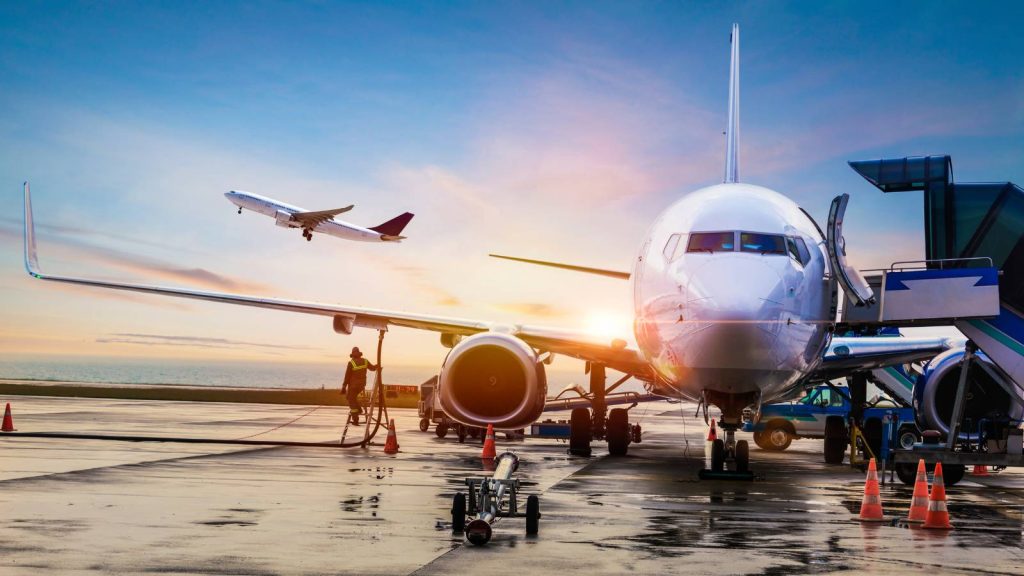
Tablets are poised to become even more deeply embedded in airport ecosystems, evolving from functional tools to intelligent platforms that enhance every aspect of air travel. As emerging technologies mature, these devices will transform how passengers interact with airports and how staff manage operations—making travel smoother, more engaging, and more sustainable.
6.1 AI & IoT Integration for Smarter Airports
The next generation of airport tablets will leverage AI-driven personalization and IoT connectivity to create seamless experiences. Pilots already use specialized tablets like the iFly EFB Aviation Tablet for real-time flight data, while future passenger-facing tablets could:
- Predict delays before they’re announced by analyzing global flight patterns
- Sync with personal devices to guide travelers via indoor GPS the moment they enter terminals
- Automate baggage tracking, sending tablet alerts if luggage is misplaced
At Heathrow’s Terminal 4, tablets with the Flightradar24 app let travelers track global air traffic in real time—a feature likely to expand to other airports.
6.2 Augmented Reality (AR) for Enhanced Passenger Guidance
AR is turning tablets into interactive wayfinding tools:
- At Munich Airport, AR tablets overlay arrows onto live camera feeds to direct passengers to gates, lounges, or baggage claim
- Future versions could highlight personalized routes based on flight time, mobility needs, or even retail preferences
- For staff, AR maintenance guides on rugged tablets might project repair instructions onto malfunctioning equipment
Vnukovo Airport’s child-friendly gaming tablets hint at AR’s potential for entertainment—imagine young travelers exploring virtual airport adventures while waiting for flights.
6.3 Sustainable & Energy-Efficient Tablet Solutions
Eco-conscious innovations will shape tablet design:
- Solar-powered charging stations (like those tested at Amsterdam Schiphol) could keep tablets running without grid power
- Modular tablets with replaceable parts may reduce e-waste, aligning with airports’ net-zero goals
- Kinetic energy pads in high-traffic areas might harness footfall to recharge devices
Even security protocols will evolve: Advanced CT scanners may soon eliminate the need to remove tablets from bags, streamlining screenings.
7. Case Studies: Leading Airports Leveraging Tablet Technology
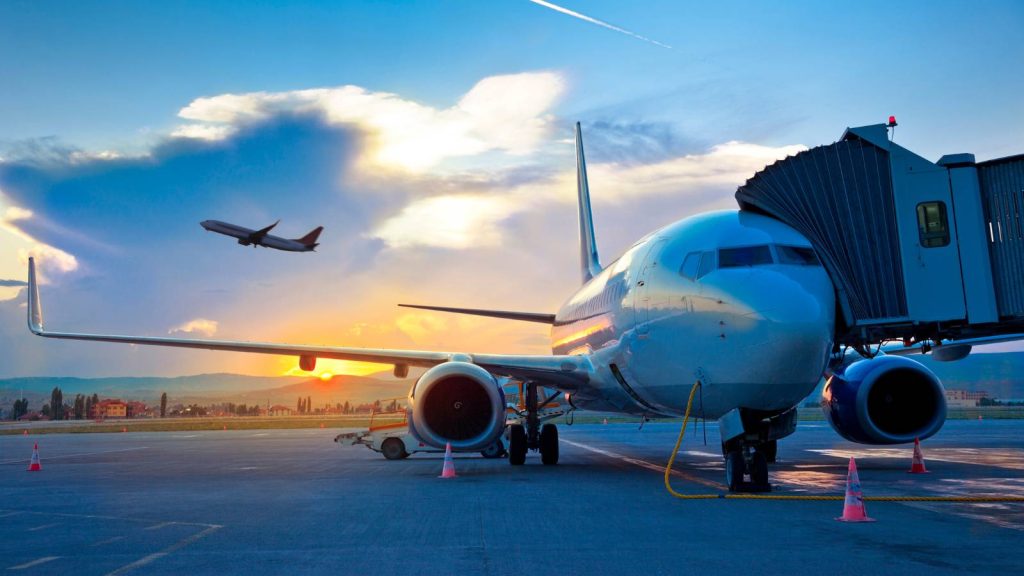
The real-world implementation of tablet solutions across global airports demonstrates their transformative impact. These case studies highlight how innovative applications of tablet technology are setting new standards for efficiency, passenger experience, and operational excellence in the aviation industry.
7.1 Singapore Changi Airport: The Gold Standard for Tablet Integration
Changi’s deployment of over 8,000 tablets across its terminals showcases multiple use cases:
- Self-service immigration kiosks with facial recognition tablets reduced processing time to under 20 seconds
- Tablet-equipped concierge staff provide multilingual assistance using real-time translation apps
- Maintenance crews use rugged tablets with AR overlays for equipment repairs, cutting downtime by 40%
The airport’s Jewel complex features interactive tablet stations that combine wayfinding with retail/attraction bookings.
7.2 Dubai International (DXB): Biometric Tablet Ecosystem
DXB’s Smart Gates system represents the world’s most comprehensive biometric tablet network:
- 60+ tablet stations handle 32% of all passenger processing with iris recognition
- Tablet-controlled smart trolleys guide passengers while displaying flight updates
- AI-powered tablets at security analyze body language for risk indicators
The system processes 1 passenger every 9 seconds, with plans to expand tablet-based “journey prediction” by 2025.
7.3 Delta Air Lines at Atlanta Airport: Operational Transformation
Delta’s 35,000 employee tablets have revolutionized operations at the world’s busiest airport:
- Ramp agents use Getac tablets to scan 98% of bags directly on tarmac, reducing mishandling to 0.3%
- Tablet-based crew scheduling dynamically reassigns staff during disruptions (saving 7,000 annual labor hours)
- Maintenance tablets with IoT sensors predict equipment failures 3 hours in advance
The airline’s Parallel Reality trial uses tablets to create personalized wayfinding for multiple passengers simultaneously.
7.4 Tokyo Haneda: Tablet-Driven Passenger Flow Management
Haneda’s innovative applications include:
- AR tablet navigation that adjusts recommended walking speeds based on crowd density
- Tablet-controlled robot assistants that handle 15% of passenger queries
- Energy-harvesting tablets in lounges powered by ambient light and motion
The airport’s tablet systems maintain 95% on-time performance despite handling 85 million passengers annually.
7.5 Heathrow Terminal 5: The Tablet-First Terminal
Heathrow’s flagship terminal demonstrates end-to-end tablet integration:
- 100% tablet-based check-in reduced peak queues by 55%
- Staff tablets with thermal imaging detect ill passengers before security
- Retail tablets remember passenger preferences across visits using encrypted tokens
The terminal’s ”Follow Me” tablets guide connecting passengers via dynamic floor projections.
8. Conclusion: The Unstoppable Shift Toward Tablet-Driven Airports
Tablets have become the silent revolutionaries of modern air travel, seamlessly weaving themselves into every aspect of airport operations. From check-in counters to cockpit operations, these devices have transformed chaotic terminals into streamlined hubs of efficiency while elevating passenger experiences through personalized, on-demand services. The numbers speak for themselves—major airports report double-digit improvements in processing times, security throughput, and operational costs thanks to tablet integration. Yet beyond the metrics lies a more profound shift: tablets are redefining expectations, turning what was once considered premium service into the new baseline for air travel.
As we look ahead, tablets will evolve from visible tools to invisible enablers—embedded in smart kiosks, enhanced by AI, and powered by sustainable designs. The airports leading this charge aren’t just adopting technology; they’re reimagining the entire passenger journey around the tablet’s potential. While challenges around cybersecurity and infrastructure persist, the industry’s trajectory is clear: tablets have moved from being convenient accessories to essential infrastructure, as fundamental to modern airports as runways and control towers. The future belongs to airports that don’t just use tablets, but think through them—creating spaces where every interaction is intuitive, every operation is optimized, and every traveler feels the difference.


